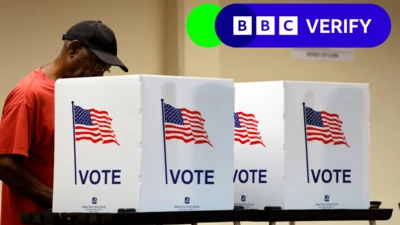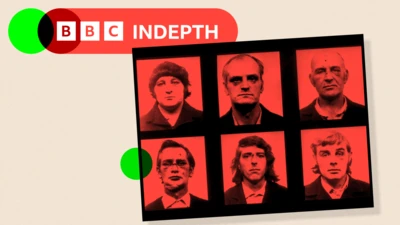We've updated our Privacy and Cookies Policy
We've made some important changes to our Privacy and Cookies Policy and we want you to know what this means for you and your data.
Royal rebranding: What will happen to stamps, coins, banknotes and passports?
Image source, Getty Images
After 70 years on the throne, Queen Elizabeth II had become an intrinsic part of our everyday lives. We're accustomed to seeing her portrait, profile and coat of arms on letters, in our loose change and on cereal boxes - so what will be different now?
All change
All 29 billion coins in circulation in the UK have the Queen's head on them. The most recent design dates from 2015, when she was 88 years old. It was the fifth coin portrait created during her reign.
The Royal Mint won't say how or when it will start issuing coins with King Charles III's head on them, but it's likely that the Queen's coins will remain in circulation for many years, and that the process to replace them will be a gradual one.
Image source, The Royal Mint
Before all British coins were updated for decimalisation in 1971, it was quite normal to find multiple monarchs on your change.
While we don't know what the King's coin portrait will look like, a coin issued in 2018 by the Royal Mint to commemorate his 70th birthday gave us a hint. And one thing that seems certain is that he will be shown facing the other way - to the left. Tradition dictates that the direction in which the monarch faces on coins must alternate for each new monarch.
Once signed off by the government, new designs will be manufactured at the Royal Mint in Llantrisant, south Wales.
Image source, Getty Images
The Queen has appeared on all Bank of England notes since 1960 (notes issued by Scottish and Northern Irish banks do not depict the monarch). There are about 4.5 billion individual Bank of England notes worth about ÂŁ80bn in circulation at the moment and, as with coins, these will be gradually phased out.
All notes and coins will remain legal tender. The Bank of England will give lots of notice if that is to change.
Stamps and postboxes
Since 1967, all stamps issued by the Royal Mail have featured an embossed silhouette of the side profile of Queen Elizabeth II.
Royal Mail will now stop producing Queen Elizabeth II stamps - although they can still be used on letters and parcels - and will begin the process to create new ones.
Image source, Royal Mail
The new King has featured on stamps before, but Royal Mail won't yet say what the new designs with him will look like.
As well as putting the monarch on stamps, the Royal Mail puts royal cyphers on many postboxes.
More than 60% of the UK's 115,000 postboxes carry the EIIR mark of Queen Elizabeth II - E for Elizabeth and R for Regina, which means queen. In Scotland, they feature the Scottish crown.
Outside Scotland, any new postboxes will now feature the King's cypher - but as the number of new boxes installed is quite low, it could be some time before you spot one of these.
Royal seal of approval
From tomato ketchup to packets of cereal to perfume, chances are you will have seen the Royal Arms alongside the words, "By appointment to Her Majesty the Queen" on some of your groceries or other items in your home. These are products which have been granted a Royal Warrant, meaning that the company who makes them supplies the Royal Households on a regular basis.
For the last century or so the monarch, their consort and heir have each issued their own Royal Warrants - making them grantors - and there are currently about 900 Royal Warrants held by 800 companies.
When a grantor dies, any Royal Warrants they issued become void and the company has two years to stop using the Royal Arms. (Exceptionally, warrants issued by the Queen Mother stood for five years after her death.)
The warrants Charles has issued as Prince of Wales will continue now that he is King because they go with the household, not the title.
There is an expectation that the new King will now grant his son and heir, Prince William, the ability to issue his own warrants.
Passports still valid
But it's not just money, stamps and warrants that need updating.
All British passports are issued in the name of Her Majesty and are still valid for travel, but for new passports, the wording on the inside of the front cover will be updated to His Majesty.
Some police forces in England and Wales that still feature the royal cypher of Queen Elizabeth II in the centre of their helmet plates will have to make changes. Barristers and solicitors who have been appointed by the monarch to be Queen's Counsel will now be known as King's Counsel with immediate effect.
And finally, the national anthem will have its words changed from "God Save the Queen".
After Charles is officially proclaimed King in a formal ceremony, a public announcement will be made from the balcony at St James's Palace, including the call: "God Save the King".
The national anthem will then be played.
Top Stories
More to explore
Most read
Content is not available








